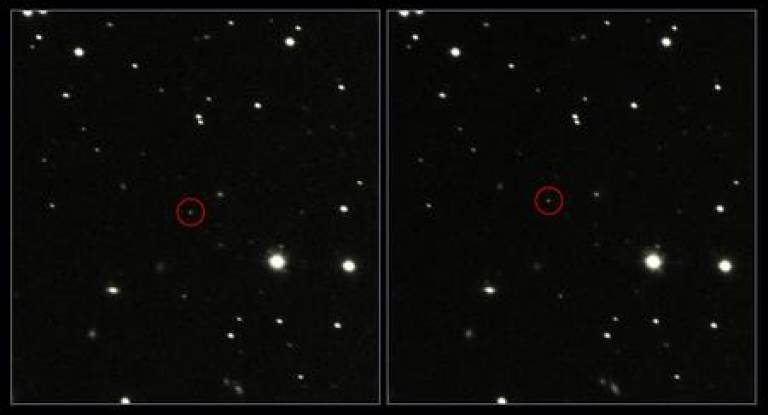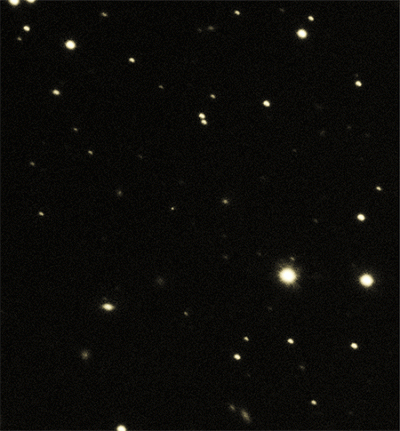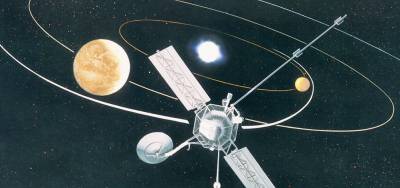A far flung outpost of UCL
19 February 2014

Disguised in a crowded field of stars, the tiny white dot highlighted in these two images is the European Space Agency's Gaia satellite, carrying on board a scientific instrument designed at UCL. Gaia lifted off in December 2013, on a mission to survey the precise locations of a billion stars in the Milky Way.
UCL's Mullard Space Science Laboratory is a major contributor to the mission. The Radial Velocity Spectrograph, one of the spacecraft's three scientific instruments was developed by MSSL. The spectrograph measures the movement of stars towards or away from us, as well as their size, temperature and age.
Since its launch on 19 December 2013 from ESA's Spaceport in French Guiana, Gaia has travelled to a point 1.5 million kilometres away known as Lagrange Point 2 - where the gravity of the Earth and Sun are in equilibrium.
From this vantage point, Gaia will scan the sky continuously for the next five years, charting a billion stars in the Milky Way.
Gaia's survey will yield an unprecedented 3D map of stellar positions and motions to investigate the origin and evolution of the Galaxy. Astronomers need Gaia to pinpoint stars to an extraordinary level of accuracy - for the brightest stars the goal is to measure their position in space to an accuracy equivalent to the size of a coin on the Moon as seen from Earth. But to calculate the stars' position, astronomers need to know the precise location of Gaia in the Solar System, too.
Fortunately, it is possible - albeit difficult - to observe Gaia using ground-based telescopes thanks to light reflected off the solar panels. But Gaia is so far away that it is about a million times fainter than the naked eye can detect.
To measure Gaia's position in the sky, a network of small and medium telescopes are monitoring the spacecraft on a daily basis. This lets ESA engineers monitor its location to a precision of just 150m, and measure its motion to an accuracy of 2.5 millimetres per second.
These two images, taken about 6.5 minutes apart on 23 January, come from the the European Southern Observatory's 2.6-metre VLT Survey Telescope.
Image credit: ESO
Links
High resolution images
Labelled image
Unlabelled image
These images can be reproduced freely providing the source is credited
 Close
Close





